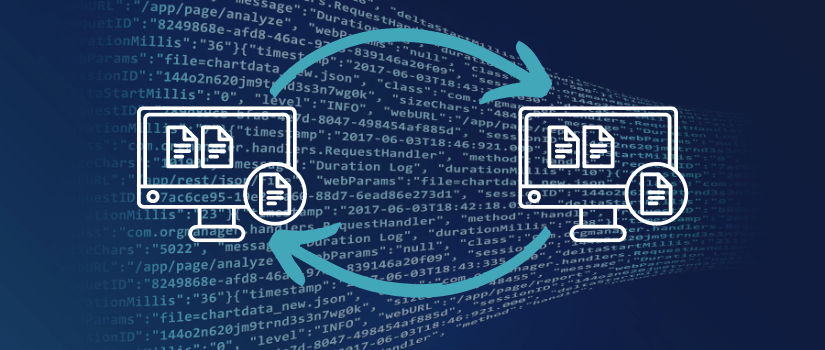Planning to move your siloed infrastructure to the cloud might definitely be the right decision. But are you aware of what exactly cloud transformation means and what are the different ways you can move your system to the cloud? To rephrase, do you know which strategy is best for your business?
Not sure?
Don’t worry! This article has all you need to know about application migration, followed by the strategies that help in the same. We also highlight the reasons why one would be better than the other given a particular situation. Without much ado, let’s get started!
What is Application Migration?
In simple terms, Application Migration is the transfer of software applications from one infrastructure to the other. Or to put it this way, application migration is the process of moving all of the enterprise applications from the on-premise architecture to the cloud. What’s important to note here is that the destination environment could be anything from a private cloud, public cloud, or a hybrid environment.
Having said that, one thing that intrigues most of the leaders is whether they actually need such a thing? Considering that their business is working well with decent performance, why would one undergo the pain of transforming their infrastructure, moving to the cloud?
To answer the above, one must take into consideration the rising importance of remote access. With technological advancements increasing by leaps and bounds, organizations are compelled to not just keep an eye on them but also find one that would benefit their organization. One of these is cloud migration.
Where the traditional infrastructure seems good, it has its limitations which tend to disrupt the functioning and performance of the organization. For one, employees must be present within the office premises to access the system and work. Since every data is stored in the local storage, sharing and accessing them becomes a hassle. Not to forget the time and money spent on hosting an on-premise architecture.
Read more: Azure Migration Strategy
Cloud infrastructure, on the other hand, can be accessed over the web. Not only the applications but also the data associated with them are hosted online. Meaning that employees can access them as and when they want. This makes your business running no matter what time of day it is or where you are.
Sounds good?
Now that you might be convinced on how application migration benefits your business, here are three different strategies to know and decide before making the move?
Application Migration: Strategies that streamline the process
-
Rehost
The first strategy is rehosting. This basically means lifting your existing applications and shifting them to a different infrastructure (probably the cloud). To rephrase, rehosting is all about picking your applications (one or more) from the on-premise infrastructure and then shifting it to the cloud environment. It is pretty much obvious that this strategy doesn’t require any modifications to be made to the existing infrastructure. All you do is lift and shift.
However, if the application that is moved is done to new hardware, you might have to modify the host configuration. In case you are looking for an easy and simple way to migrate your applications, rehosting is the best bet. It is intuitive, doesn’t require any modifications, and beginner-friendly.
For large scale organizations that are looking for a quick fix or want to remold their infrastructure without causing harm to the ongoing projects, rehosting does the job swiftly. Rehosting can be done either in automation or manually by seeking help from domain experts.
-
Replatform
Next to rehosting is re-platforming. Like rehosting, application re-platforming is also referred to as lift, tinker, and shift. What this means is that the application is first lifted, tinkered, and then shifted to the appropriate platform. The additional term here is tinkering. This suggests that before moving the application to the cloud infrastructure, a significant amount of changes are embedded within the system.
Experts believe that modifying, optimizing, or tweaking the existing application helps increase the performance of the cloud infrastructure. For instance, if you are hosting all of your enterprise data on the local database, before moving this to the cloud, it is best to shift the database instances to Amazon’s RDBS. While doing redundant and unwanted data are removed. This reduces the time spent on moving application data to the AWS architecture.
For organizations that are willing to induce automation in the process, and are of the view that certain changes made would not cast a major impact on the workflow, the re-platforming method is the best way to migrate applications to the cloud.
-
Refactor
The third strategy used to migrate applications from the on-premise architecture to the cloud is re-factoring. As the name suggests, this method involves making changes on a huge scale before the same is migrated to the cloud environment. Often, it so happens that there are applications that use a lot of resources, and moving them to the cloud would only add to the monthly expenses.
It is best to restructure these in a way that keeps their functioning intact while reducing their end to end dependency. Engineers that work on redesigning the application take into consideration all of their dependencies ensuring that the redesigned application isn’t just the replica but the best and optimized for efficient performance. Note that you can always choose from a partial refactoring and a full factoring based on your overall requirements.
For organizations that are seeking the addition of new features and functionalities in their existing infrastructure and are ok with the fact that modifying the application would affect their current business operations, re-factoring is an excellent solution.
Conclusion
Not sure which of these would be best for your business? Get in touch with Stridely Solutions. We are a leader in the cloud migration space and have worked with multiple businesses helping them with the migration process. Whether you are a small venture or a huge enterprise, our experts provide business-driven and need-specific solutions to all.


